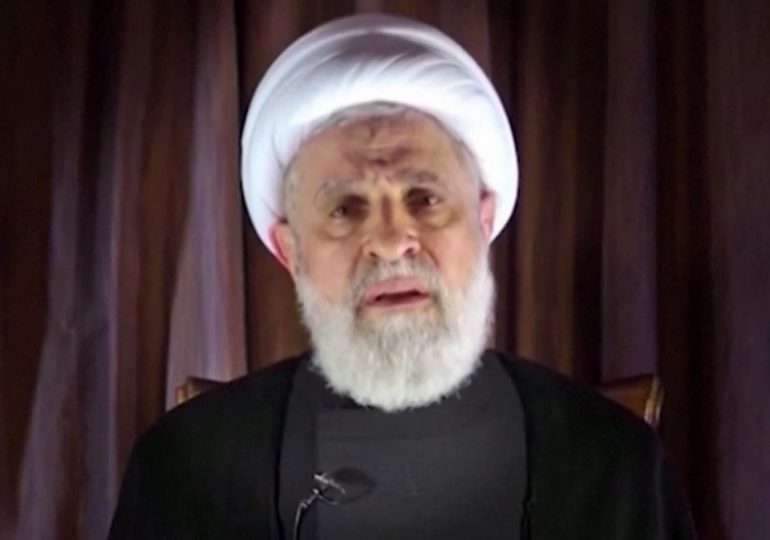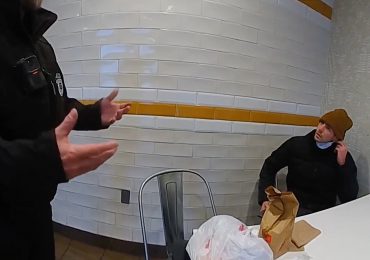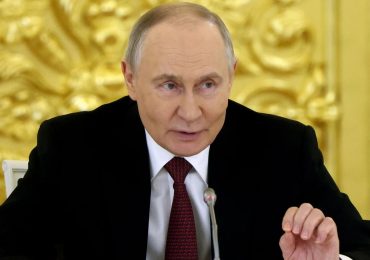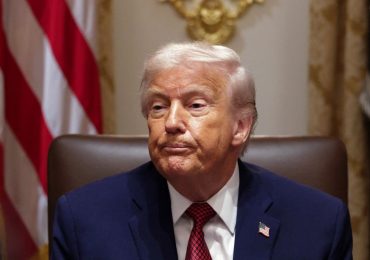HEZBOLLAH’S acting leader has issued a chilling warning to Israel from inside a hidden bunker – vowing to furiously fight on.
Naim Qassem, 71, gave a television address from inside war-torn Lebanon as the biggest ever rocket blitz from the terror group rained down on an Israeli city today.
ReutersHezbollah’s acting leader Naim Qassem issued a chilling warning to Israel from an underground hideout today[/caption]
ReutersHezbollah launched its largest ever rocket attack on Israel today as the Iron Dome was forced to kick into action[/caption]
EPASmoke rises from a Lebanese village after an Israeli airstrike on Khiam and Kfar Kila[/caption]
The speech came after Hezbollah launched the biggest ever blitz seen in the northern Israeli city of Haifa with a terrifying 105 rocket barrage.
The ruthless terror group has been pounded by Israeli air strikes and lost dozens of its senior commanders following a pager and walkie-talkie attack which decimated its ranks.
But its hidden rocket troops managed to launch an unprecedented strike on the third largest city in Israel – sending the 260,000-strong population dashing for cover.
Most of the missiles were intercepted by Israel’s ground-to-air air defences but blazing debris was reported to have crashed in several areas of the northern coastal city.
Ambulance teams said a 71-year-old woman suffered a shrapnel wound but was not seriously hurt and no other injuries were reported.
A spokesman said: “Following the Red Alerts, we headed to search multiple reported sites.
“We found a 71 year old fully conscious female with a shrapnel wound to her arm. We treated her on scene and evacuated her to hospital in mild to moderate condition.
“Further teams are treating a number of shock victims.”
Video showed emergency workers scouring several buildings in Haifa’s Kiryat Yam suburb smashed in the rocket raid – the first serious attack on the city in 20 years.
Israeli warjets were scrambled soon after the noon attack and took out some of the rocket launchers used to fire the projectiles from southern Lebanon.
Hezbollah confirmed it was behind the attack aimed at the Haifa and Krayot areas boasting it had launched “a large salvo of missiles”.
A further 20 rockets were identified crossing from Lebanon into Israeli territory soon after but were also taken out by Iron Dome rockets and other missile defences.
During the address, stand-in boss Qassem defiantly said the terror group is still intact despite Israel dealing “powerful blows” in recent weeks.
Qassem was thrown into the top role within the Iran-backed para militant group after a range of calculated IDF strikes wiped out Hezbollah’s chain of command one-by-one.
We are firing hundreds of rockets and dozens of drones. A large number of settlements and cities are under the fire of the resistance
Naim Qassem
The biggest scalp saw former chief Hassan Nasrallah targeted with a number of bunker buster bombs in Lebanon.
Earlier today Hezbollah’s weapons smuggling chief was also killed in yet another Israeli kingpin strike in Lebanon.
The IDF said Suhail Hussein Husseini controlled transfers of huge stashes of advanced weapons through Syria from allies in Iran.
The huge number of deaths has caused Hezbollah and Qassem scrambling to regroup amid a ground offensive from Israel just days later.
In the televised address Qassem assured their followers in the Middle East that Hezbollah’s leadership is still in one piece and set on defending Lebanon for as long as it takes.
He said: “The party’s leadership and the resistance [Hezbollah] are meticulously organised.
“We have overcome painful blows.
“We are firing hundreds of rockets and dozens of drones. A large number of settlements and cities are under the fire of the resistance.
“Our capabilities are fine and our fighters are deployed along the front lines.”
AFPAn Israeli man inspects the damage in his apartment after a Hezbollah rocket blitz today[/caption]
ReutersA decimated car following an Israeli strike on Beirut’s southern suburbs today[/caption]
The acting chief also said there are “no vacant posts” in Hezbollah’s leadership as he appeared to speak from a secret underground bunker.
Promising Israel that they will continue to bring the fight to them.
Many leaders and top brass officials of Iran’s proxies have been cowering in safety bunkers in recent weeks.
After the deadly hit on Nasrallah even Iranian Supreme Leader Ayatollah Ali Khameni was reportedly moved to a safe location amid fears on his life.
Despite becoming the acting leader after Nasrallah’s death, Qassem has not confirmed if he will remain in the role going forward.
He added that the new commander in chief will be named soon with the war setting back the usual procedures around succession.
Qassem also spoke on a potential ceasefire to stop the back and forth strikes in the region.
The talks are currently being supported by Lebanese parliamentary speaker Nabih Berri who is a key Hezbollah ally.
No details of what the temporary pause in fighting may look like have been revealed so far.
Qassem remained tight lipped about the conditions that Hezbollah may demand to halt Israel’s invasion.
Israel was only momentarily left rocked after the barrage of air strikes pummelled the country today as thy quickly hit back at Hezbollah targets.
Israel moved its first reserve division into south western Lebanon early today to carry out “limited, localised and targeted operations”.
It said the 146th Division will operate alongside another brigade and additional forces to “expose and dismantle terrorist infrastructure”.
Meanwhile, three Hamas fighters involved in the October 7 attacks a year ago yesterday have been killed in Gaza.
Muhammad Rafa’i – a terror planner said to have been directly involved in the atrocities which killed 1,200 – was killed alongside comrades in a command centre on September 30.
The IDF said it had evidence that Rafa’i joined attacks in Kfar Aza and Nahal Oz in southern Israel, as well as “terror activities” against Israeli troops.
In another operation in Rafah, southern Gaza, on October 1, two more known October 7 militants, Muhammad Zinon and Basel Ahras, were killed.
A year on from the October 7 massacre
HAMAS’ horror October 7 massacre plot escaped Israeli spies in a catastrophic security failure that sparked a year of unprecedented chaos, experts say.
It was the catalyst that plunged four nations – Israel, Palestine, Lebanon and Iran – into war, killing tens of thousands and marking a historic shift in the Middle East.
Experts have branded the spiralling situation in the Middle East as “one of the biggest human rights crises in the world right now” – triggered by the October 7 atrocity.
Bruce Riedel, who spent 30 years in the CIA including a stint in Israel at the Tel Aviv embassy, said Israel is now “fighting a war on multiple fronts”.
“We’ve never seen anything like this in Israeli history,” he said.
Since October 7, Israel’s archenemy Iran has used its terror proxies to do its dirty work.
Hezbollah has fired rockets from Lebanon in solidarity with Hamas, while the Houthis in Yemen have terrorised the Red Sea by attacking any ships they deem to be connected with Israel.
Israel is also still razing much of Gaza as its troops look to wipe out Hamas and rescue hostages still being held by Hamas thugs a year on.
Another front has also opened in Lebanon after Israeli troops and tanks last week poured over the border on a mission to wipe out Hezbollah’s war machine.
And last week, Israeli PM Benjamin Netanyahu vowed Tehran “will pay” after making the “big mistake” of unleashing 181 missiles at Israel on Tuesday night.
He met with his war cabinet in a secret underground bunker to map out the blueprints of a devastating revenge attack on Iran.
Netanyahu’s response to Iran’s blitz could target oil production facilities or even its nuclear bases in a final blow to the tyrannical regime.
But experts believe this all could have been avoided if the October 7 attack had been foiled before it could happen.
Professor Riedel, who also served as a White House advisor, said: “Israel suffered a bigger defeat last October than it ever has before.
“The attack was on Israeli homes and villages and towns and bases. Israeli civilians, over a thousand, were killed and hundreds were taken hostage. This was unprecedented.
“And in the months since, thousands of people who live near Gaza and thousands of people who live near the Lebanese border have left their homes, which again is unprecedented.”
Kristyan Benedict, Crisis Response Manager for Amnesty International UK, told The Sun: “Gaza is one of the most under surveillance areas in the world.
“There are multiple layers of security barriers between Gaza and Israel. There’s 24/7 monitoring. There are human intelligence sources inside Gaza.
“So you’d have to say there’s a catastrophic security failure that has happened.
“Senior Israeli security officials, current serving officials, previous officials and intelligence officials have already said that on the record, and that there needs to be some form of public inquiry.”
RexSmoke rises in Dahieh, Southern Beirut overnight[/caption]
Leave a comment








